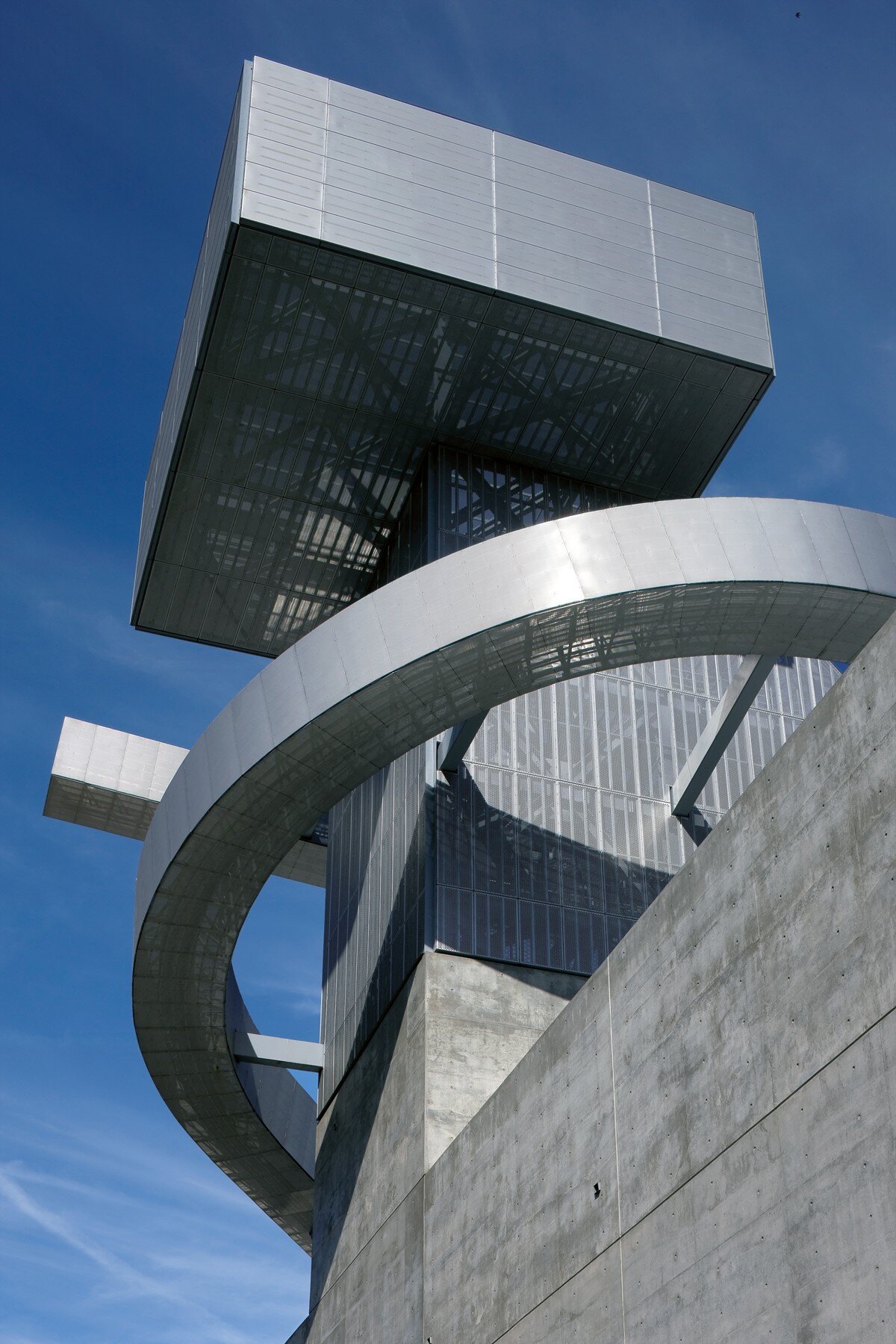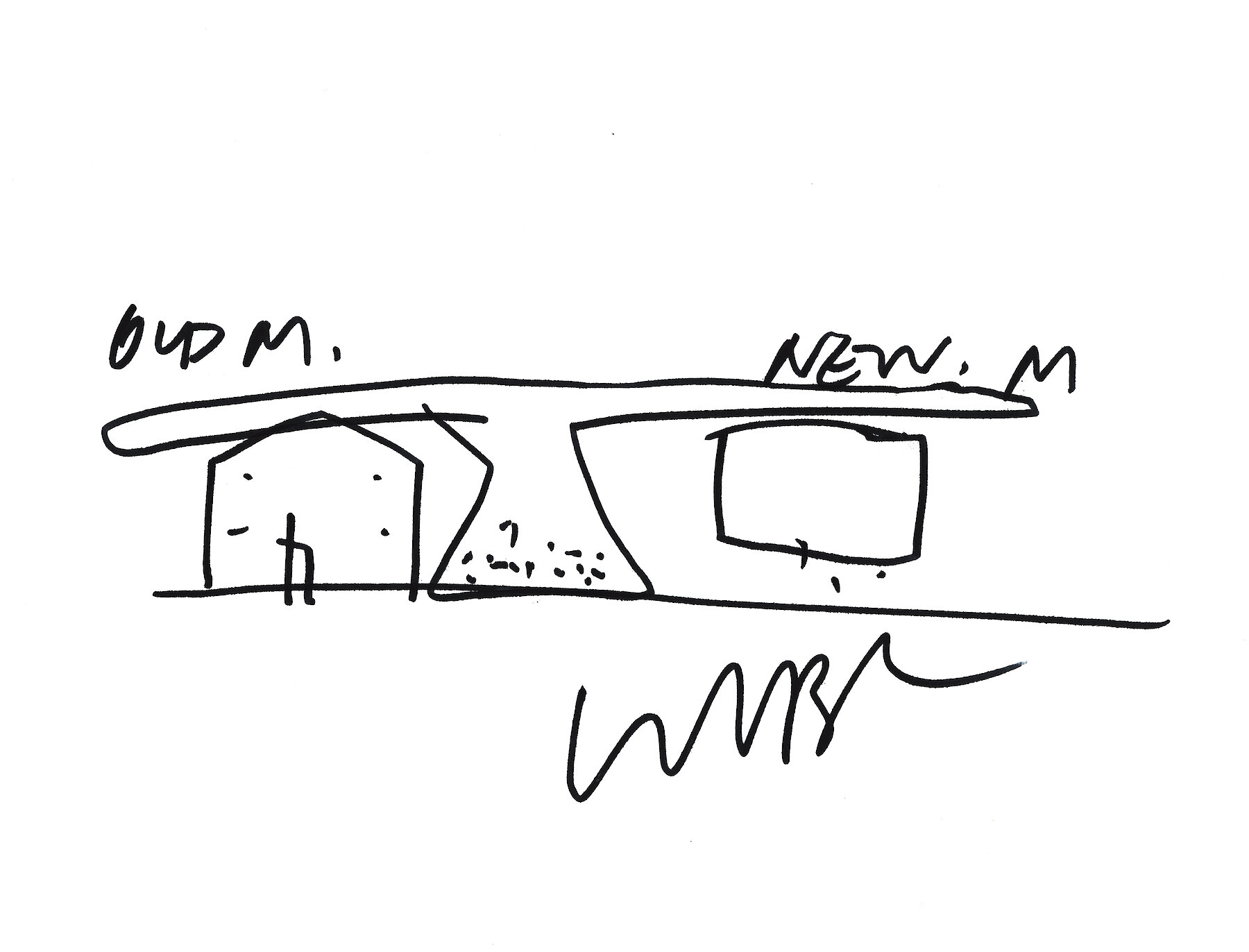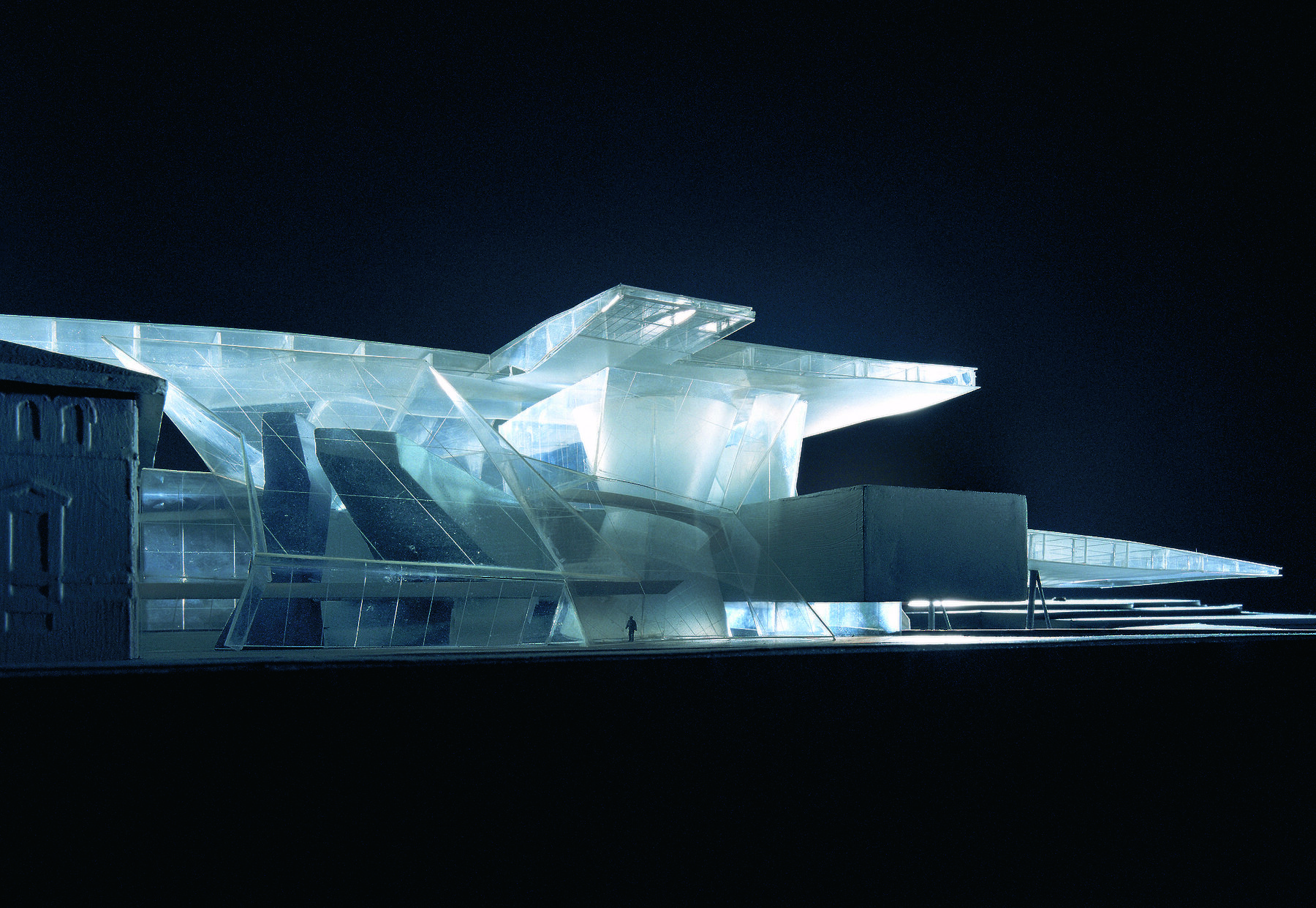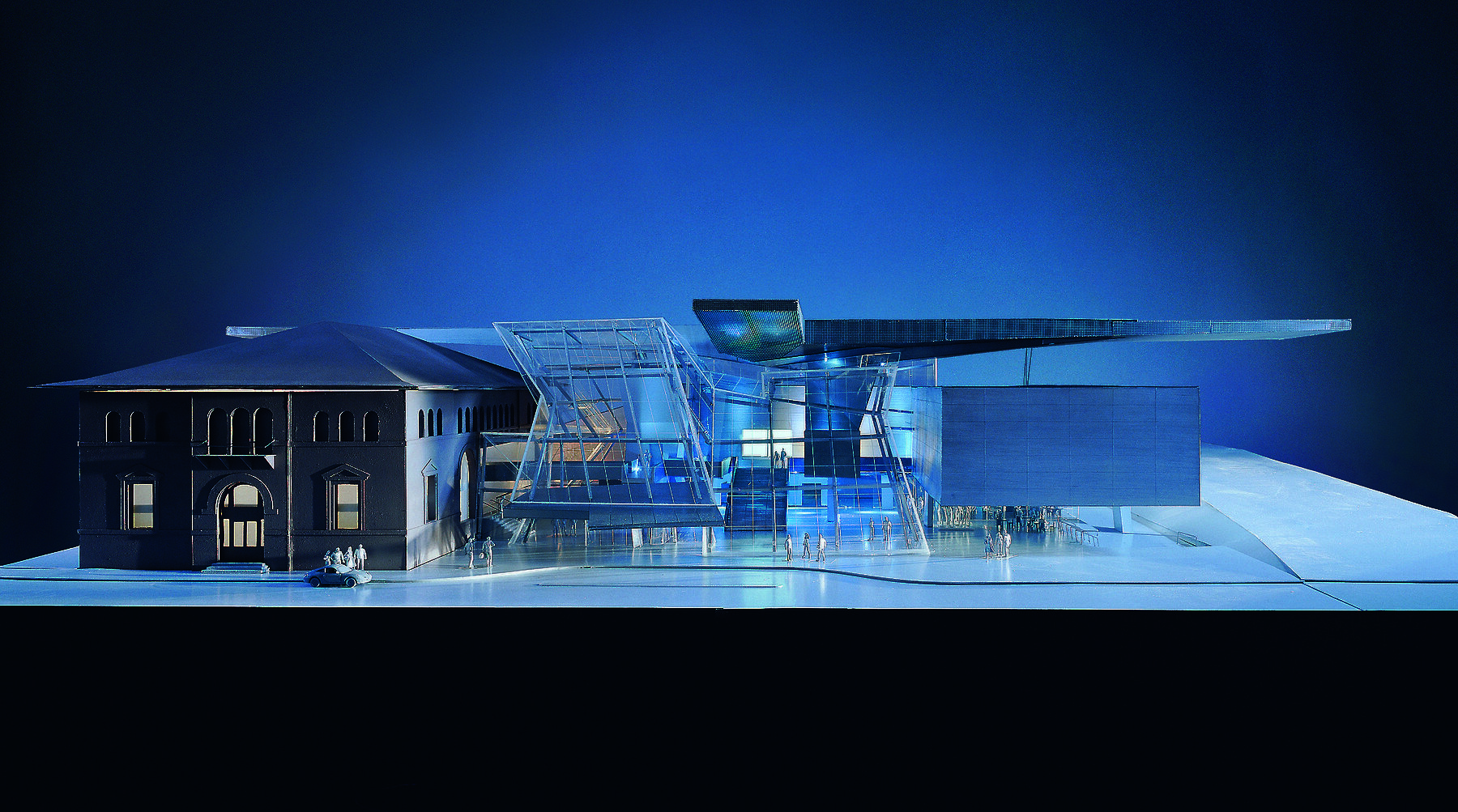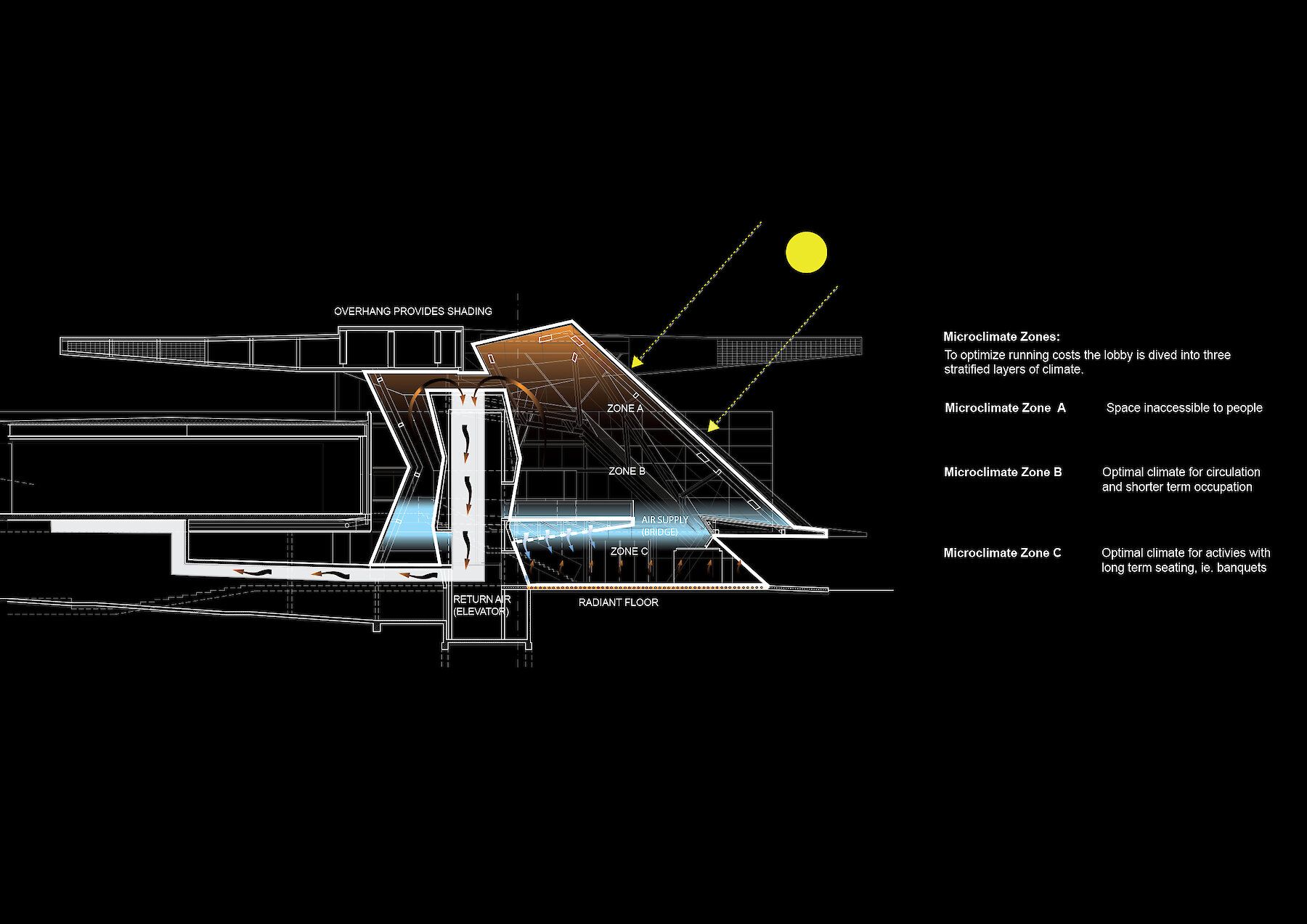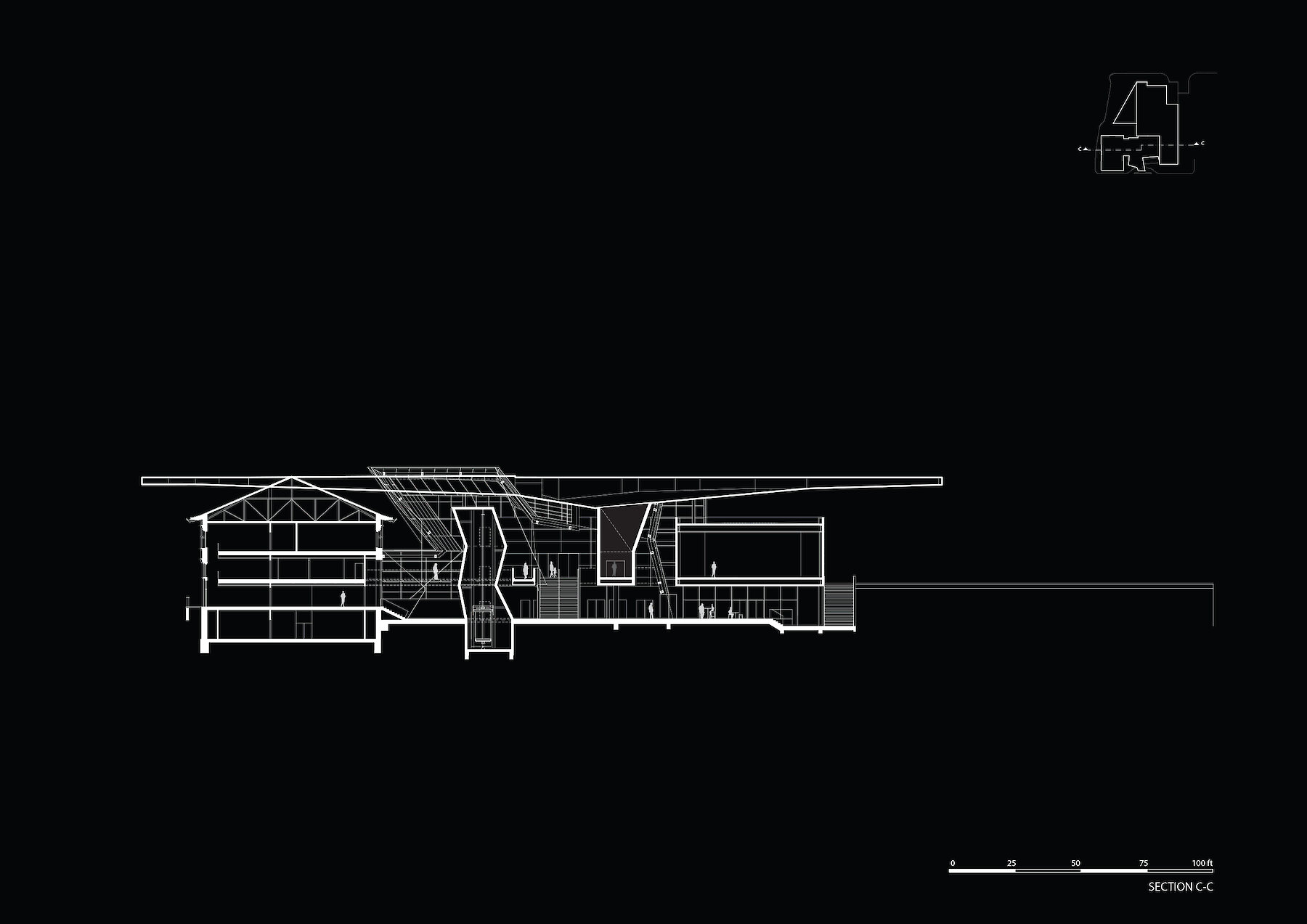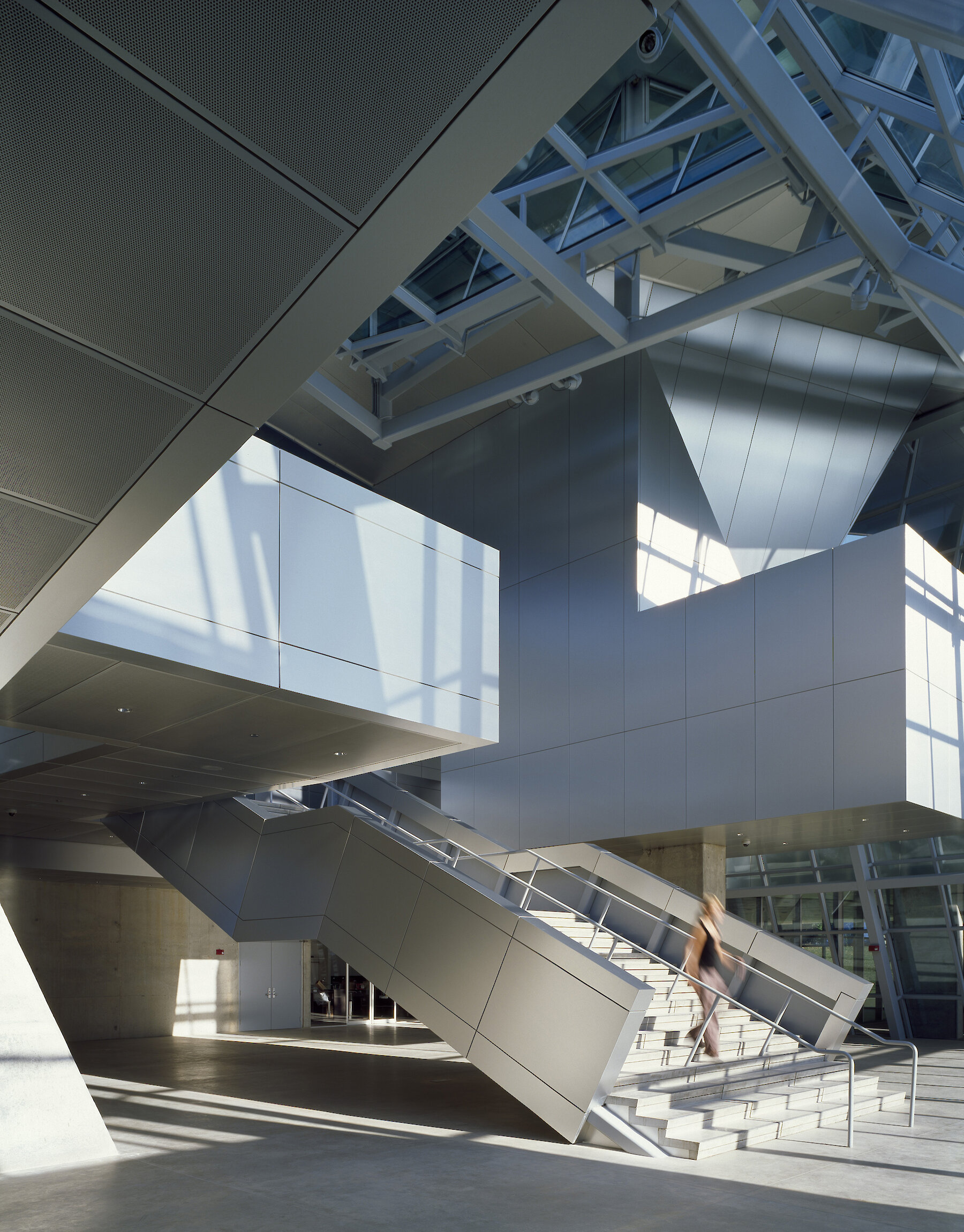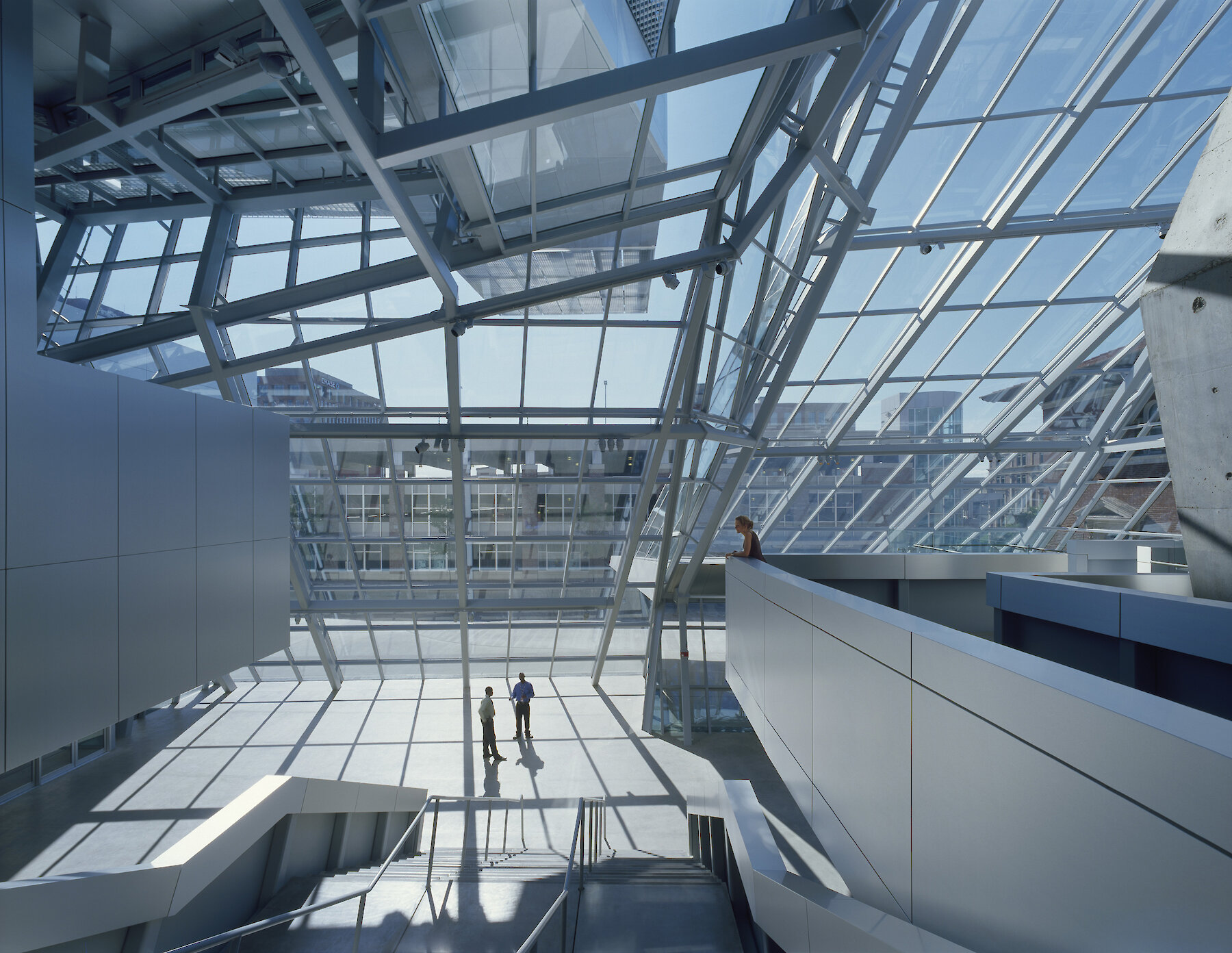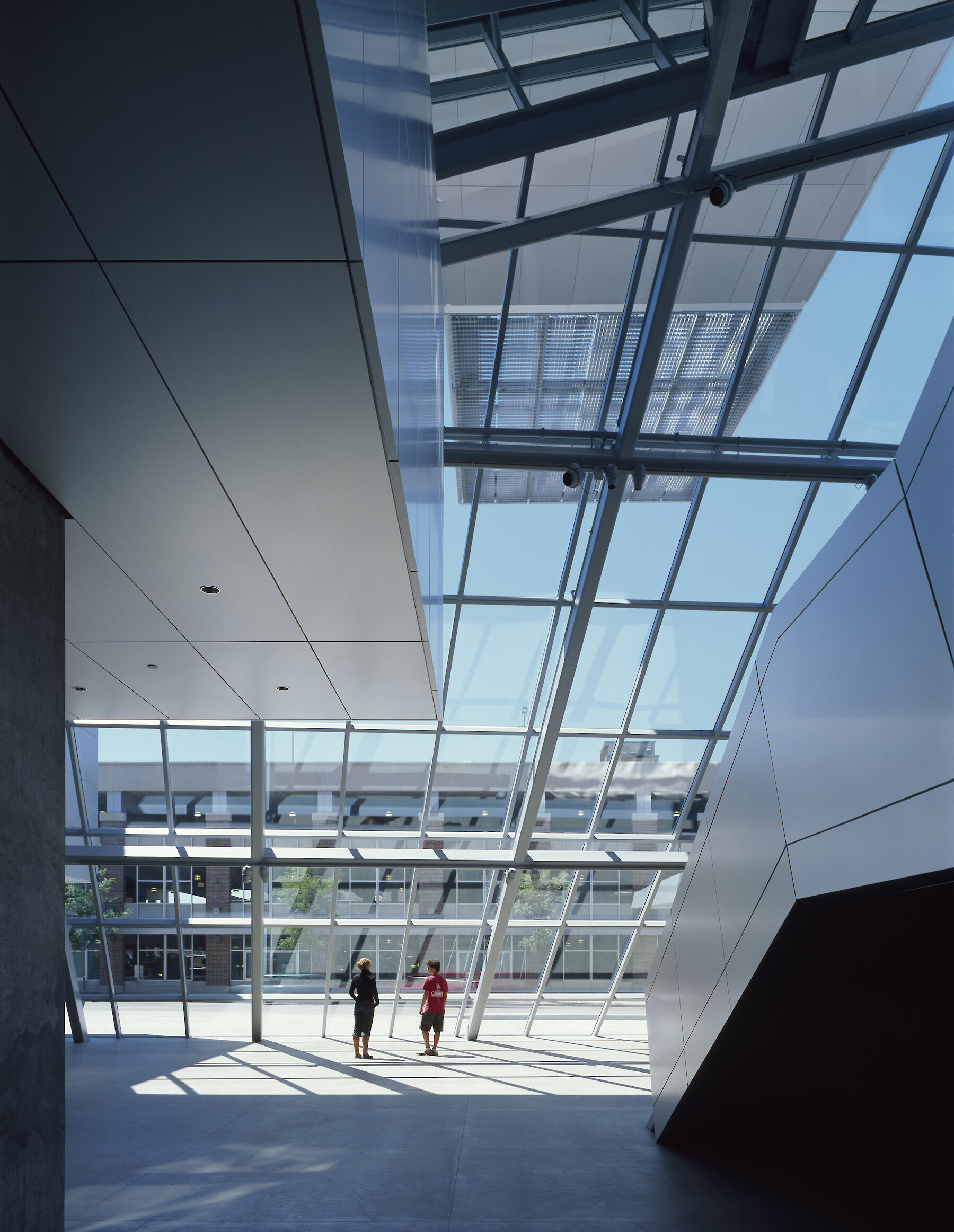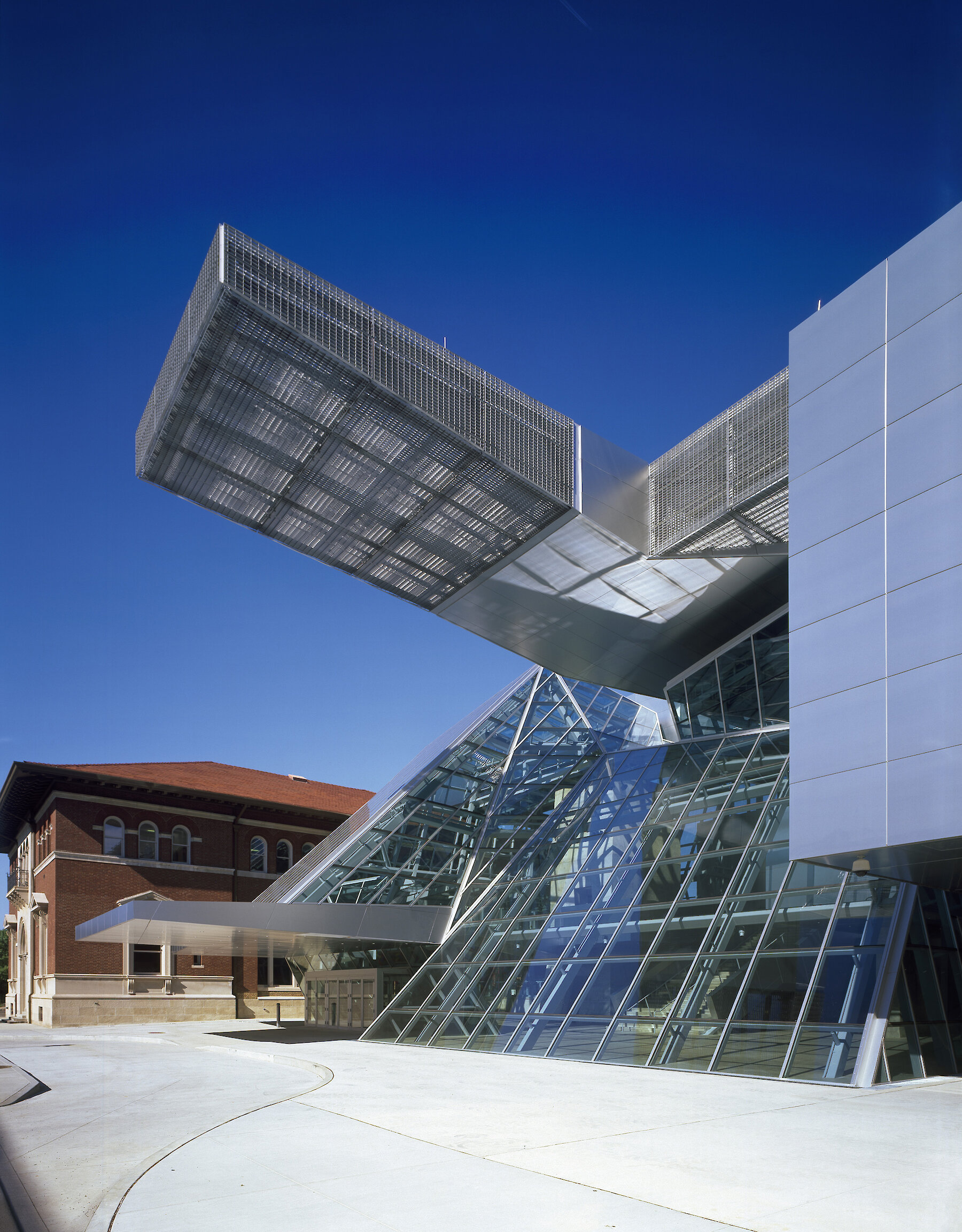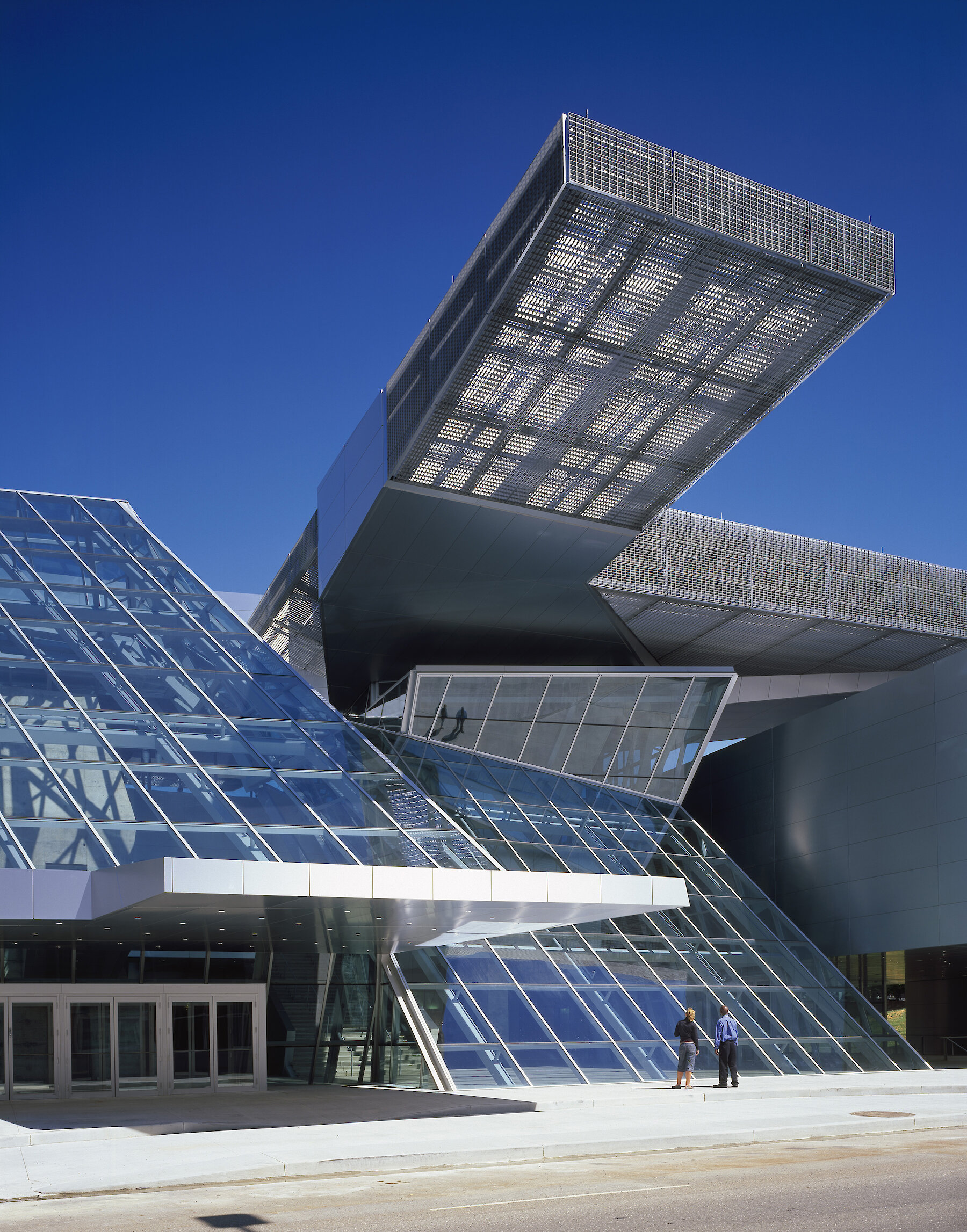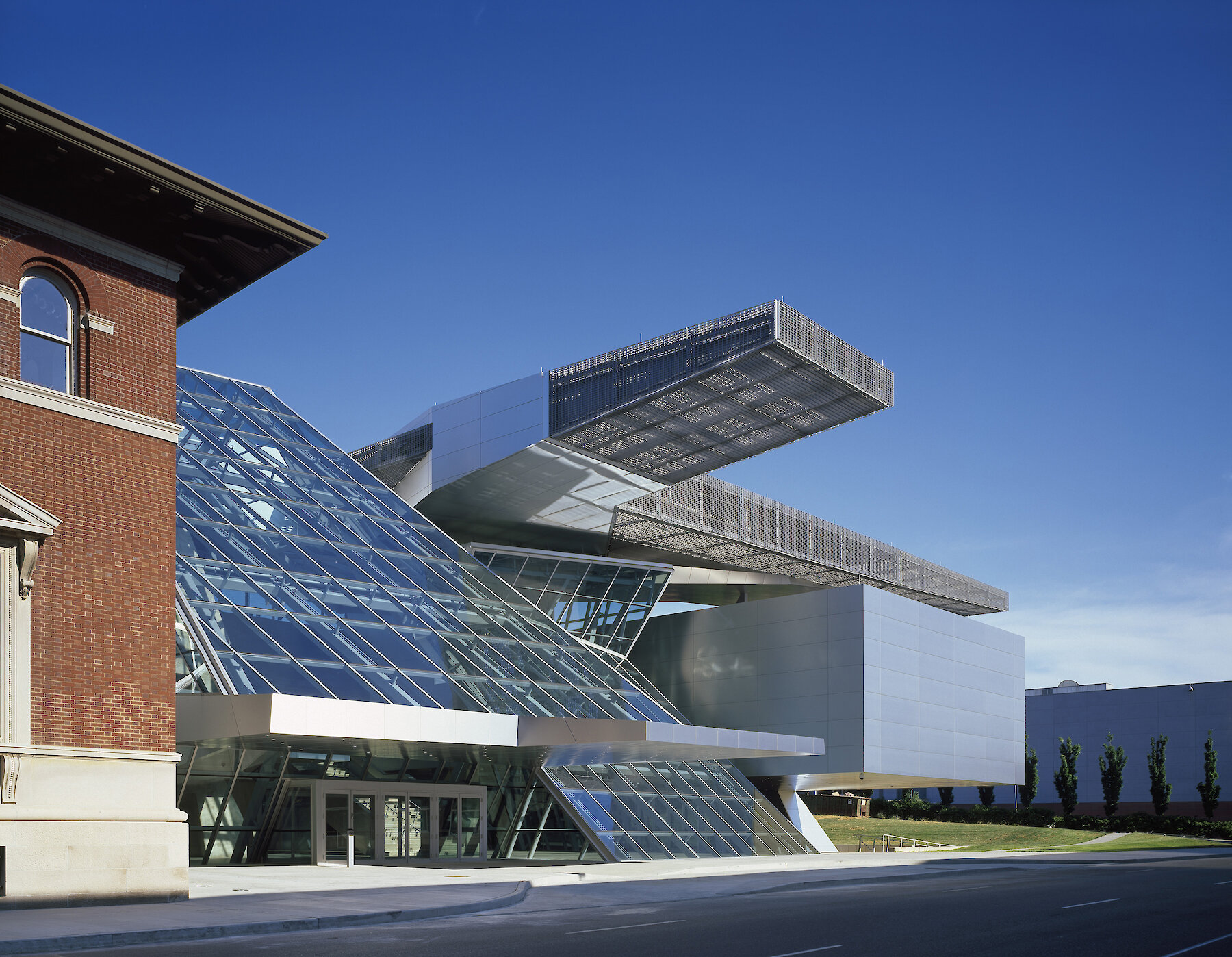Akron Art Museum
Museum as Urban Space
Museum as Urban Space
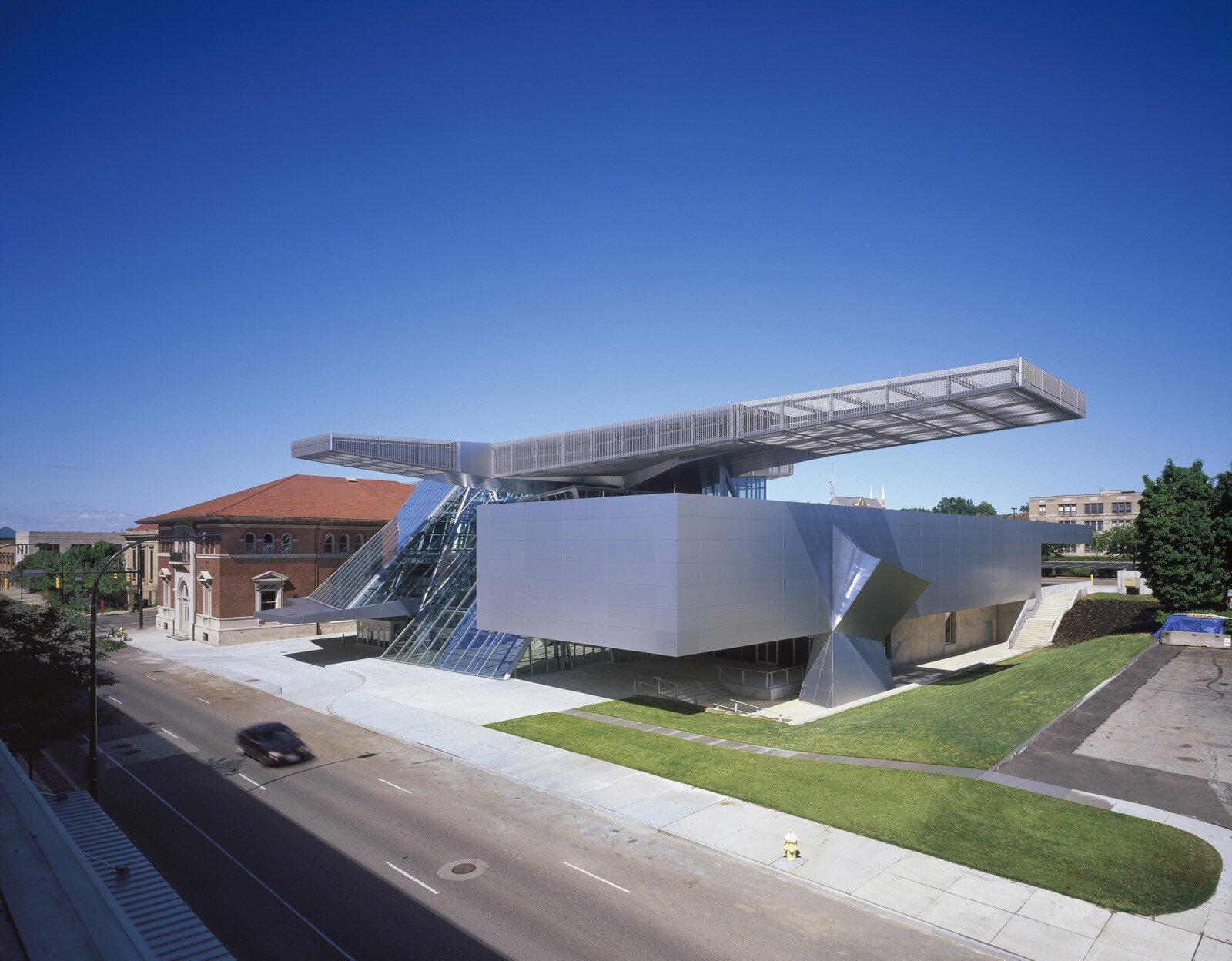
The concept of museums has changed radically since the cabinet of curiosities (“Wunderkammer”) of Rudolf II and Ferdinand II in the 16th century. With the Akron Art Museum, we developed a new museum concept: “a Museum of the Future”.

Sketch Akron Art Museum by Wolf dPrix
Coop Himmelb(l)au
Quote
The museum of today is no longer conceived only as an institution for storage and display of knowledge, it is an urban concept.
- Location
- Akron, Ohio, USA
- Client
- Akron Art Museum
- Competition
- 2001, 1st prize
- Start of planning
- 2002
- Start of construction
- 2004
- Opening
- 2007
- Site area
- 8370 m²
- Gross floor area
- 6 045 m²
- Gross volume
- 42 365 m³
- Height
- 17.5 m
- Length
- 76 m
- Width
- 61 m
Project info
The conventional functions of a museum and an urban space form together a new type of cultural center. The museum of today is no longer conceived only as an institution for storage and display of knowledge, it is an urban concept. The museum of the future is a three-dimensional sign in the city, which exhibits the content of our visual world. More than exhibition spaces that display diverse forms of digital and analog visual information, they function as spaces that cater to urban experiences. This means that art should be able to flow out of the building, and the city to flow inside. This zone becomes a hybrid space where various types of people can meet and unexpected events occur. Rather than going to the museum simply to look at art, visitors are encouraged to engage in artistic discourse, attend music and arts festivals, or simply pass the time until an appointment. Our design is therefore an urban connector as well as a destination point.
The building, an addition to an existing museum structure, is comprised of three parts: the Crystal, the Gallery Box, and the Roof Cloud.
The Crystal, which is the main entrance, provides orientation and connection between the old and new parts of the building. It is the access area for public resources such as the lecture hall, classroom, library, café, and bookstore.
The interior of the Gallery Box is an expansive space that has very few columns and is therefore extremely flexible for varying exhibition requirements. A large freight elevator brings oversized works to and from the storage areas and serves as a link between the loading dock and the Gallery Box. Natural light is eliminated in the galleries so that it can be strictly controlled, and damage from sunlight can be eliminated.
The Roof Cloud, which hovers above the building, creates a blurred envelope for the museum because of its sheer mass and materiality. It encloses interior space, provides shade around the museum, and operates as a horizontal landmark in the city.
Energy Concept
The necessary energy for lighting, heating, and cooling of the Crystal is minimized by strategic positioning of thermal mass in conjunction with extensive daylighting. The lobby utilizes microclimate zones as a heating and cooling concept. These different zones are determined by analyzing the type and anticipated length of occupancy in various areas of the Crystal and are conditioned through optimization of active and passive means. By eliminating the need to condition the entire air volume in the Crystal, and by focusing the energy used to condition the space in the areas where people are located, operating costs and energy use are significantly reduced.
Heating and Cooling with Building Mass
The Crystal and gallery floors are composed of poured in place concrete slabs with water-filled tubes that supply heating and cooling by changing the temperature state of the massive floor slab. This radiant floor system is more efficient than simple forced air systems because it uses the mass of the concrete as a storage device that delivers a stable continuous source of heating and cooling.
Daylighting
The mass and location of the Gallery Box and Roof Cloud protect the southern oriented Crystal glazing from direct sunlight. At the same time, the reflectivity of the façade material raises natural light levels in the Crystal and reduces the need to power artificial light sources.
Project insights
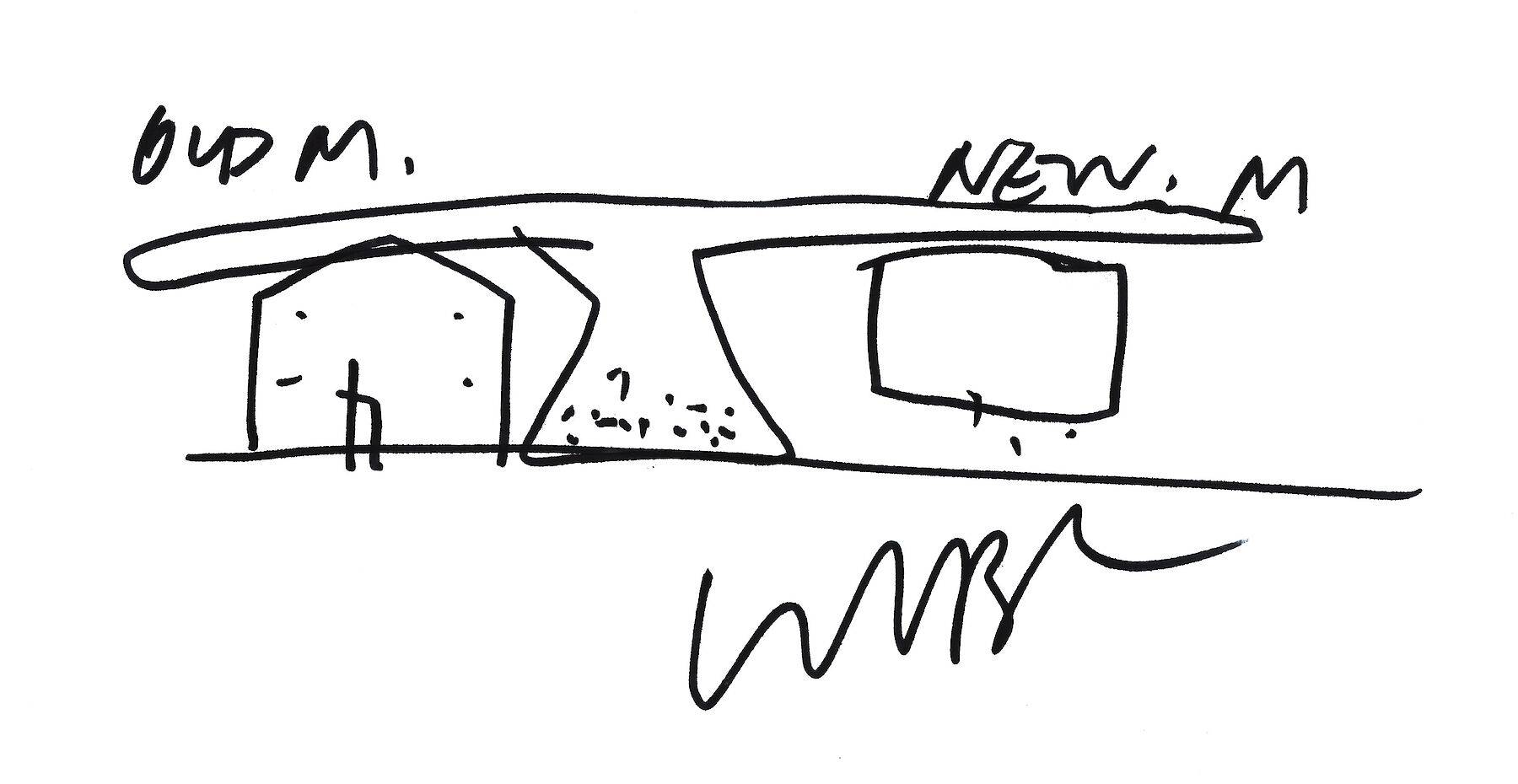

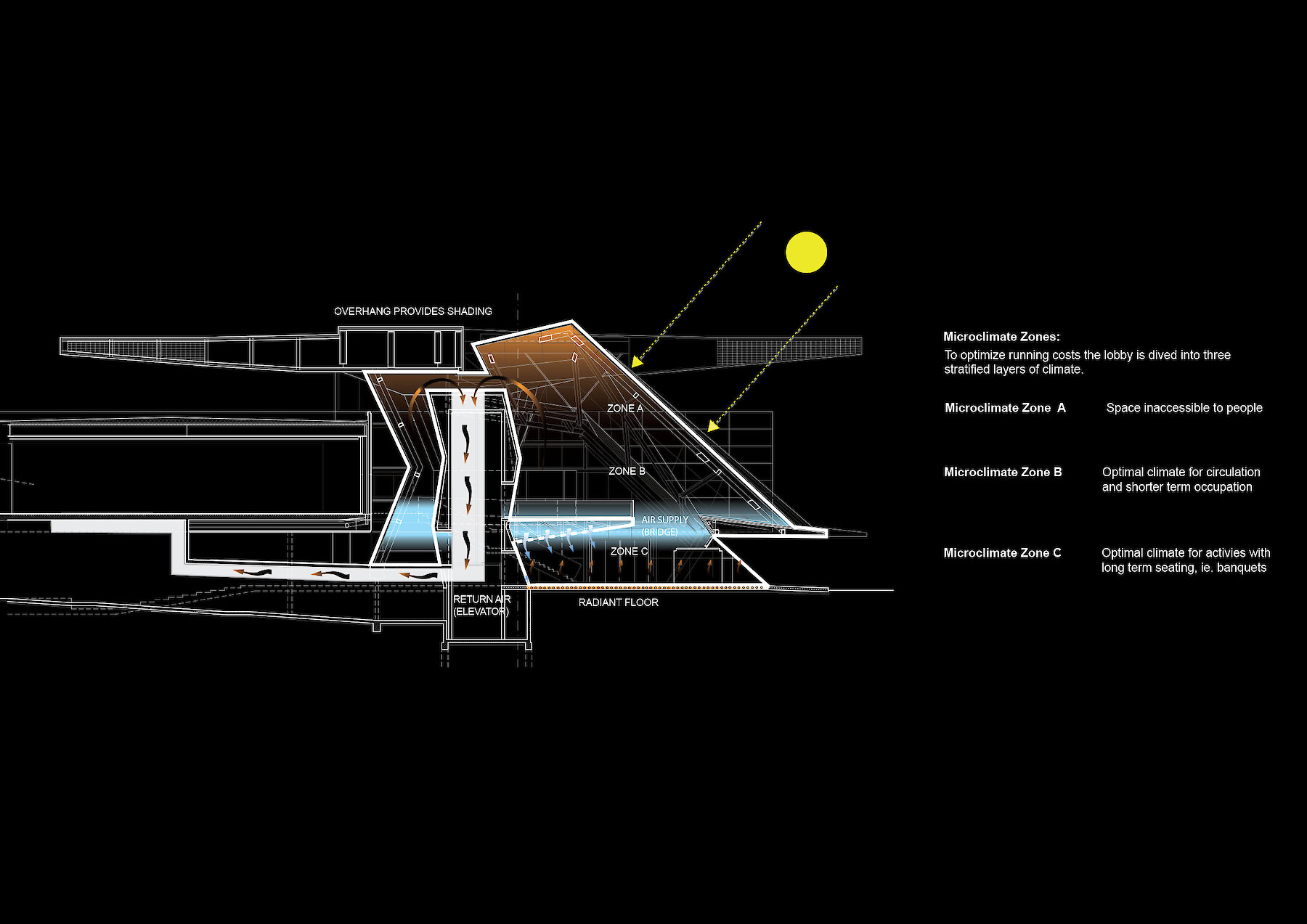

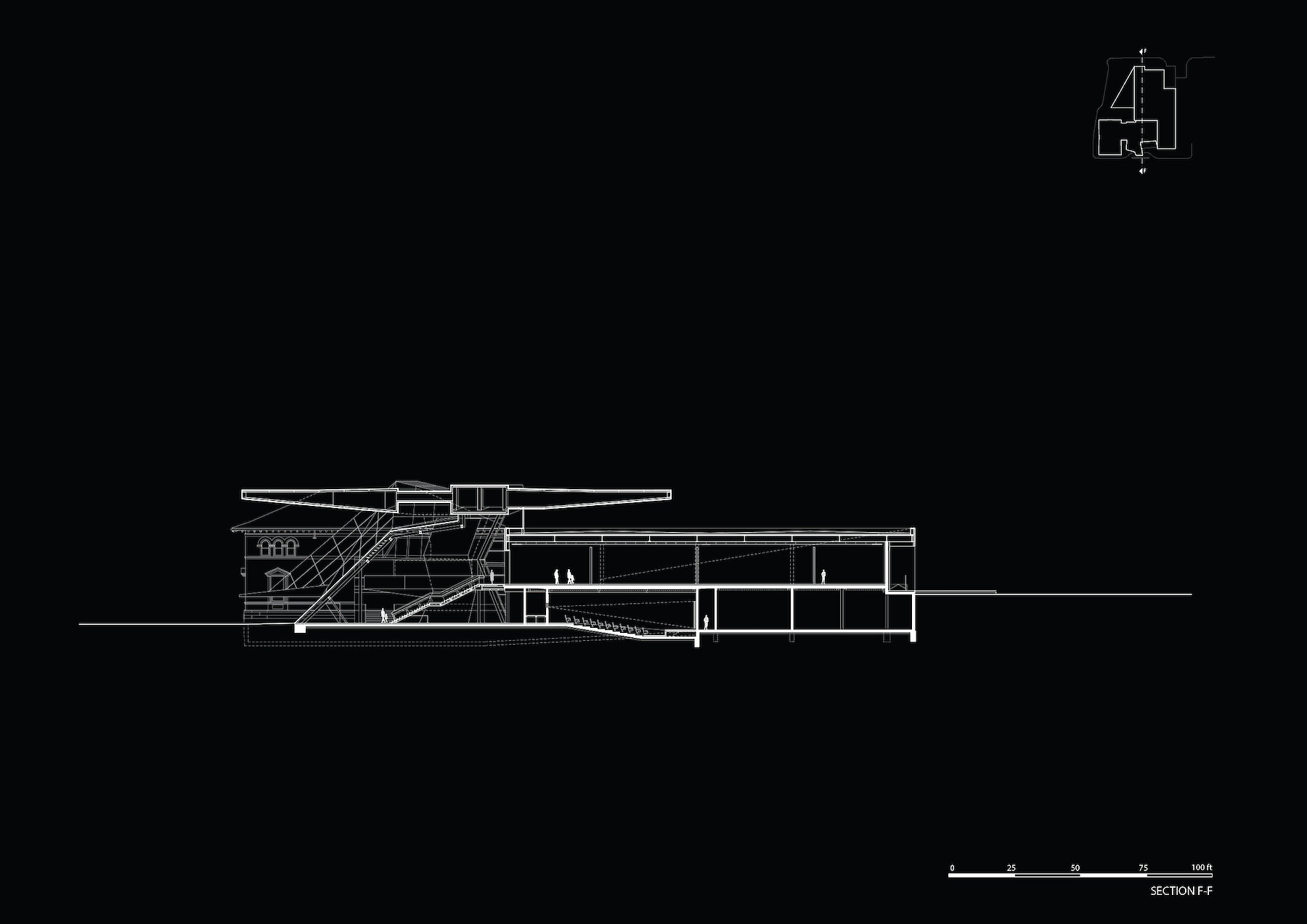
Section
Coop Himmelb(l)au
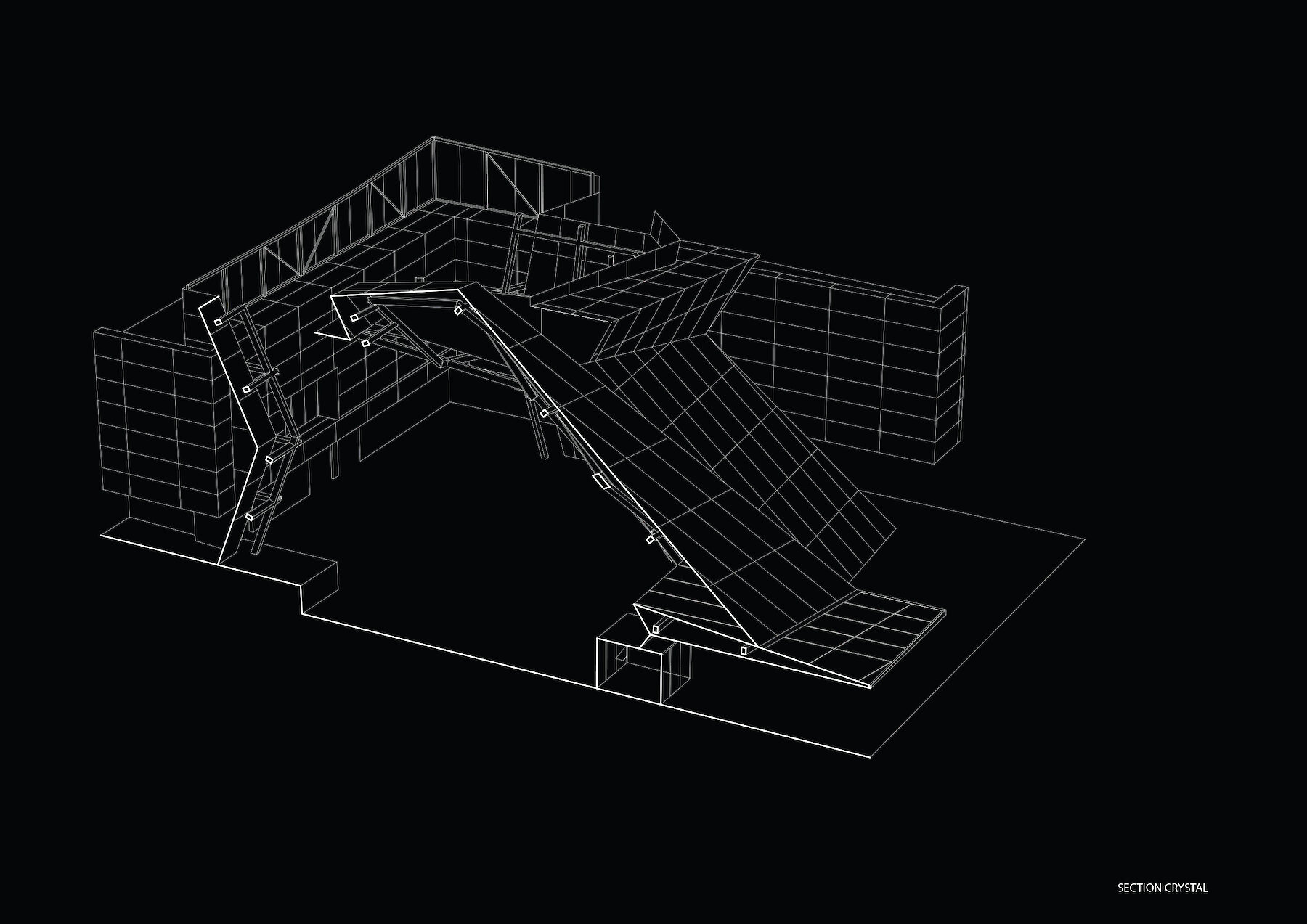
Section — Crystal
Coop Himmelb(l)au
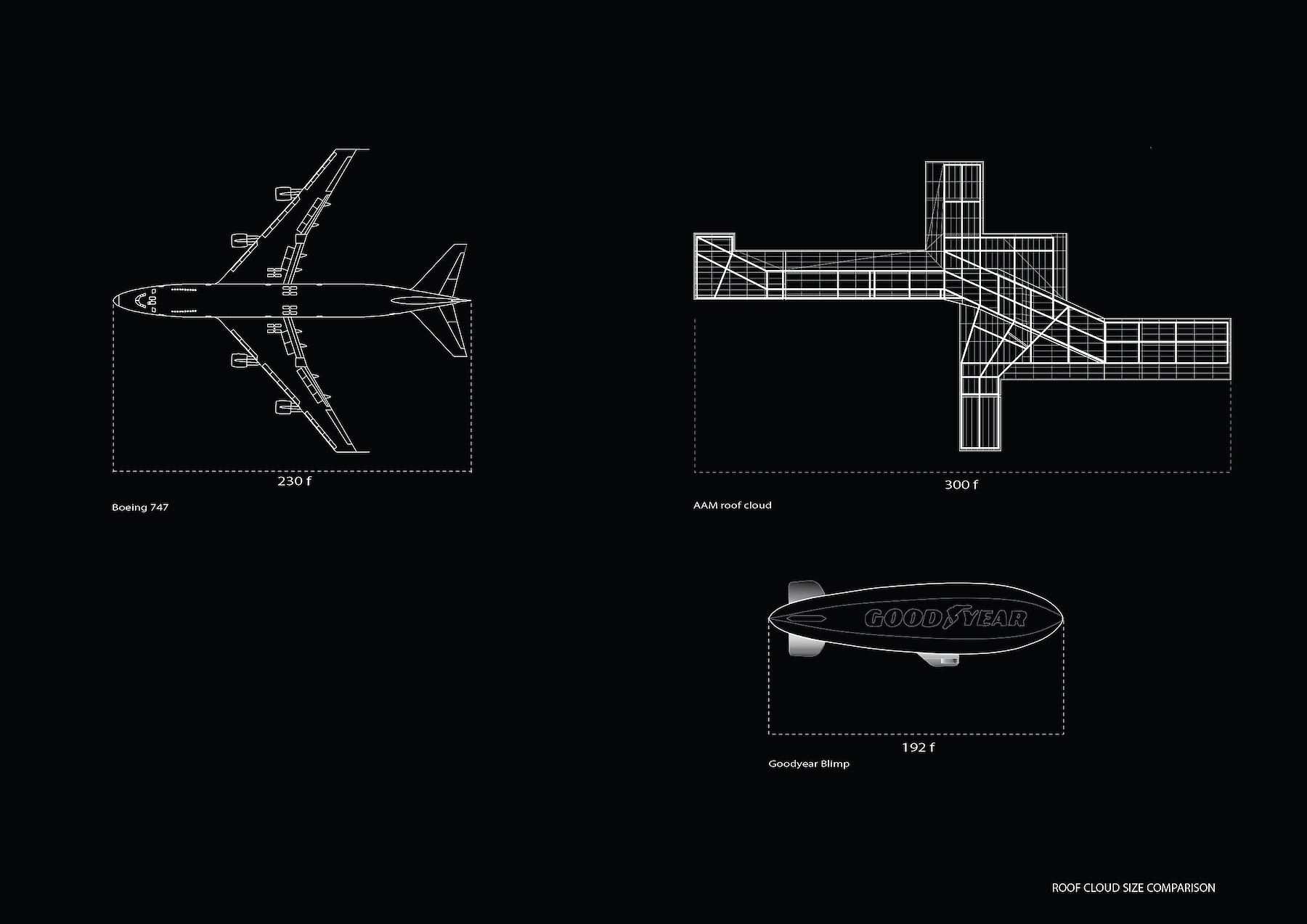
Size comparison
Coop Himmelb(l)au
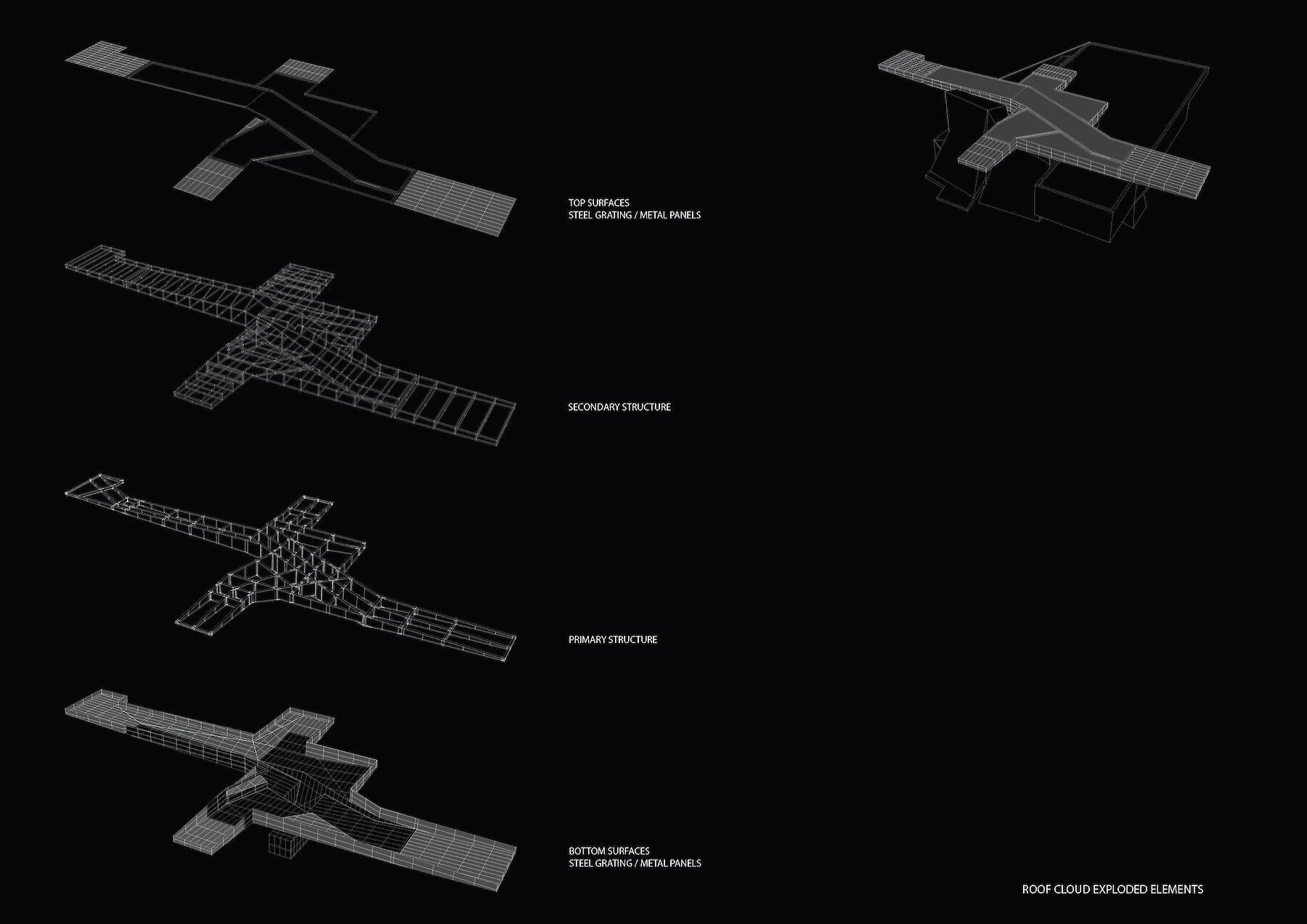
The roof — cloud — exploded elements
Coop Himmelb(l)au
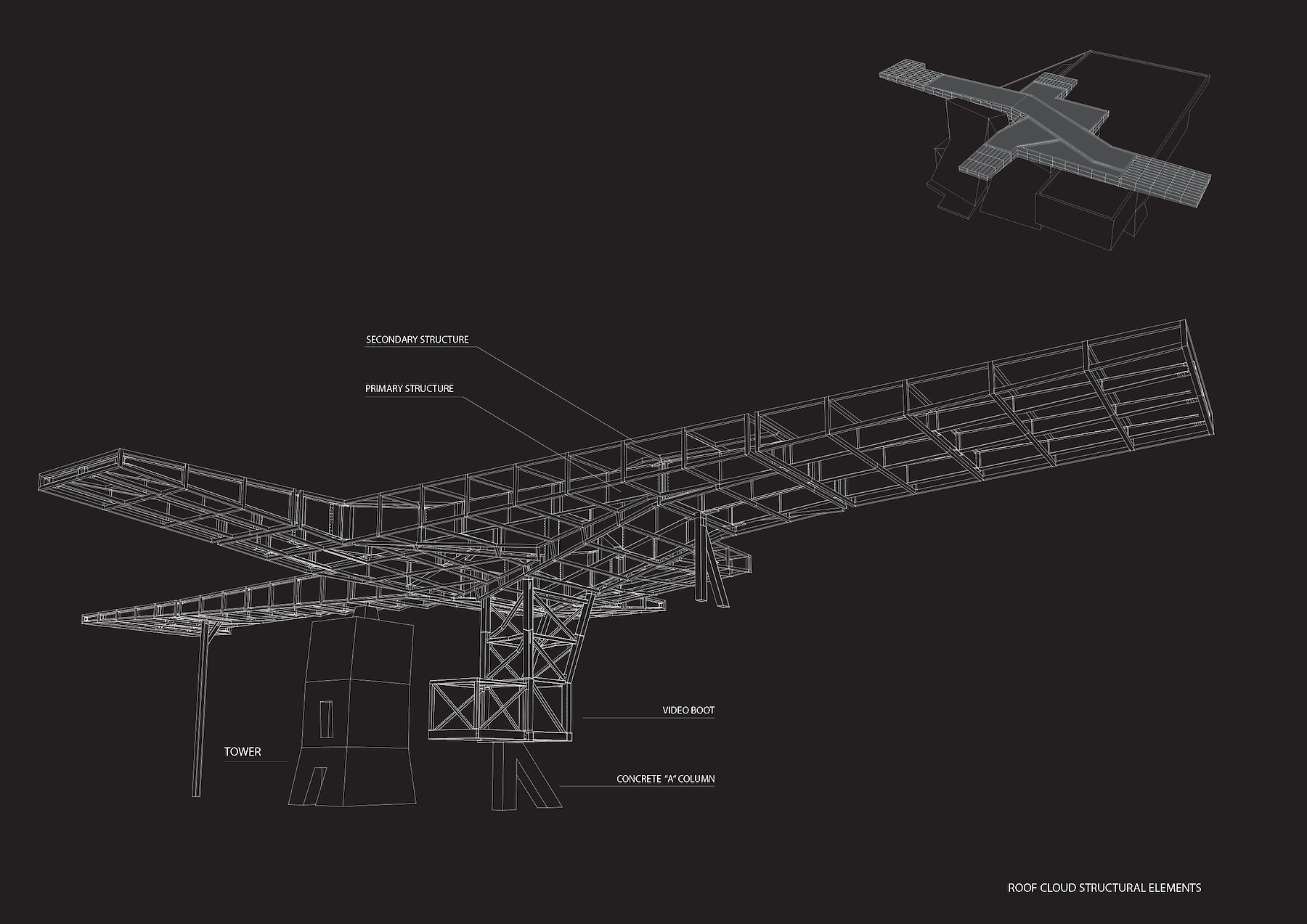
The roof — cloud structural elements
Coop Himmelb(l)au
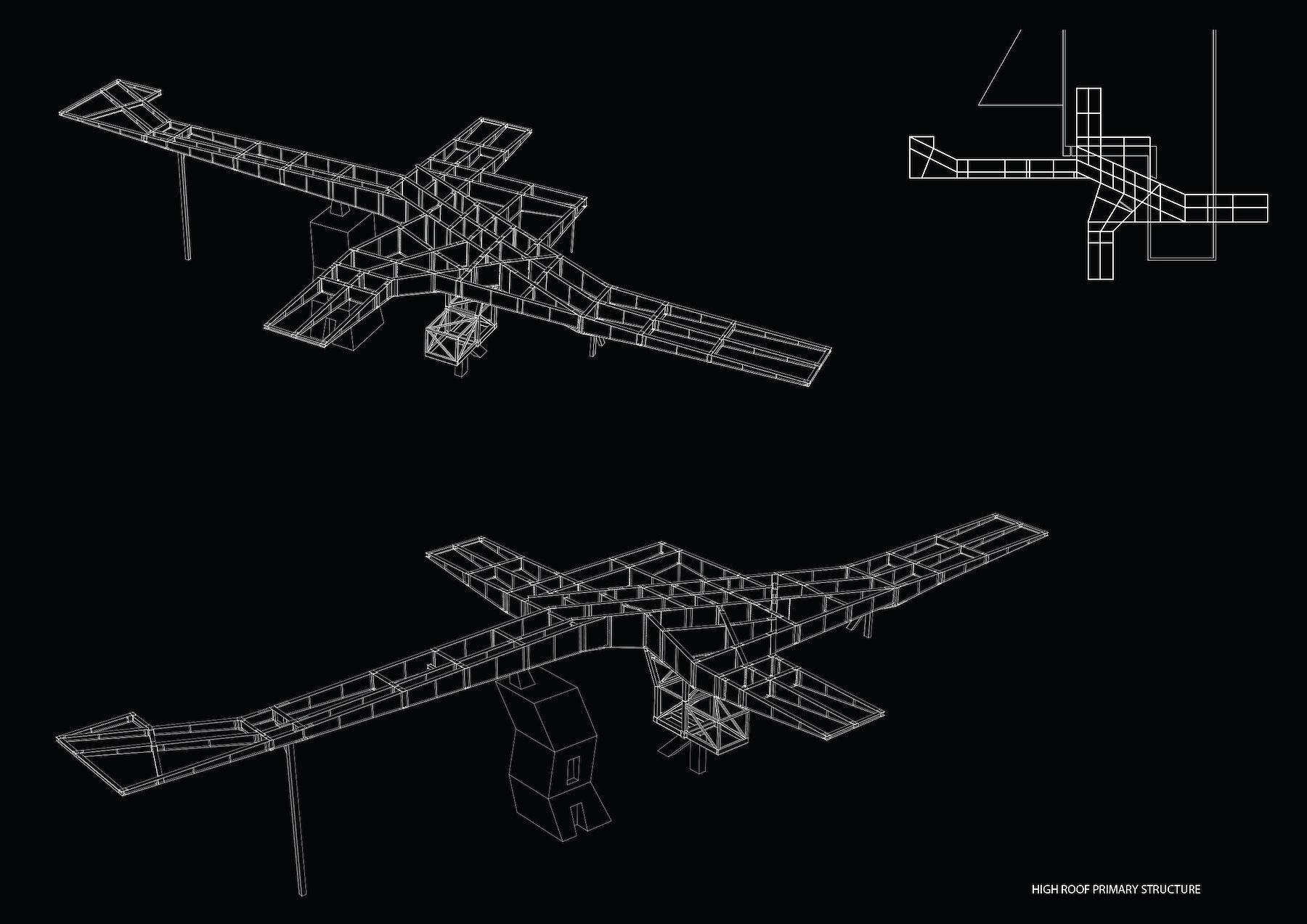
The roof — primary structure
Coop Himmelb(l)au
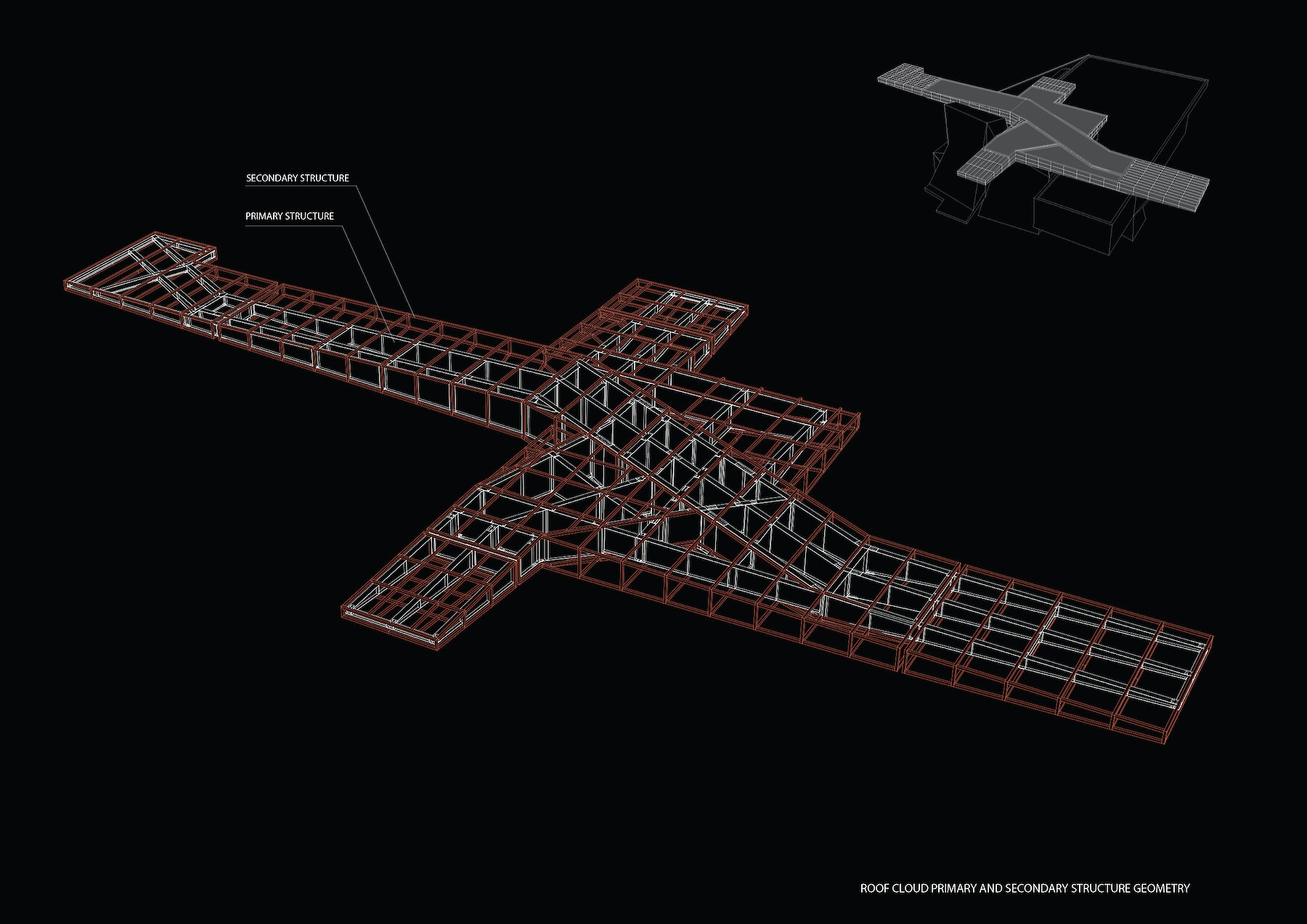
The roof — secondary structure
Coop Himmelb(l)au
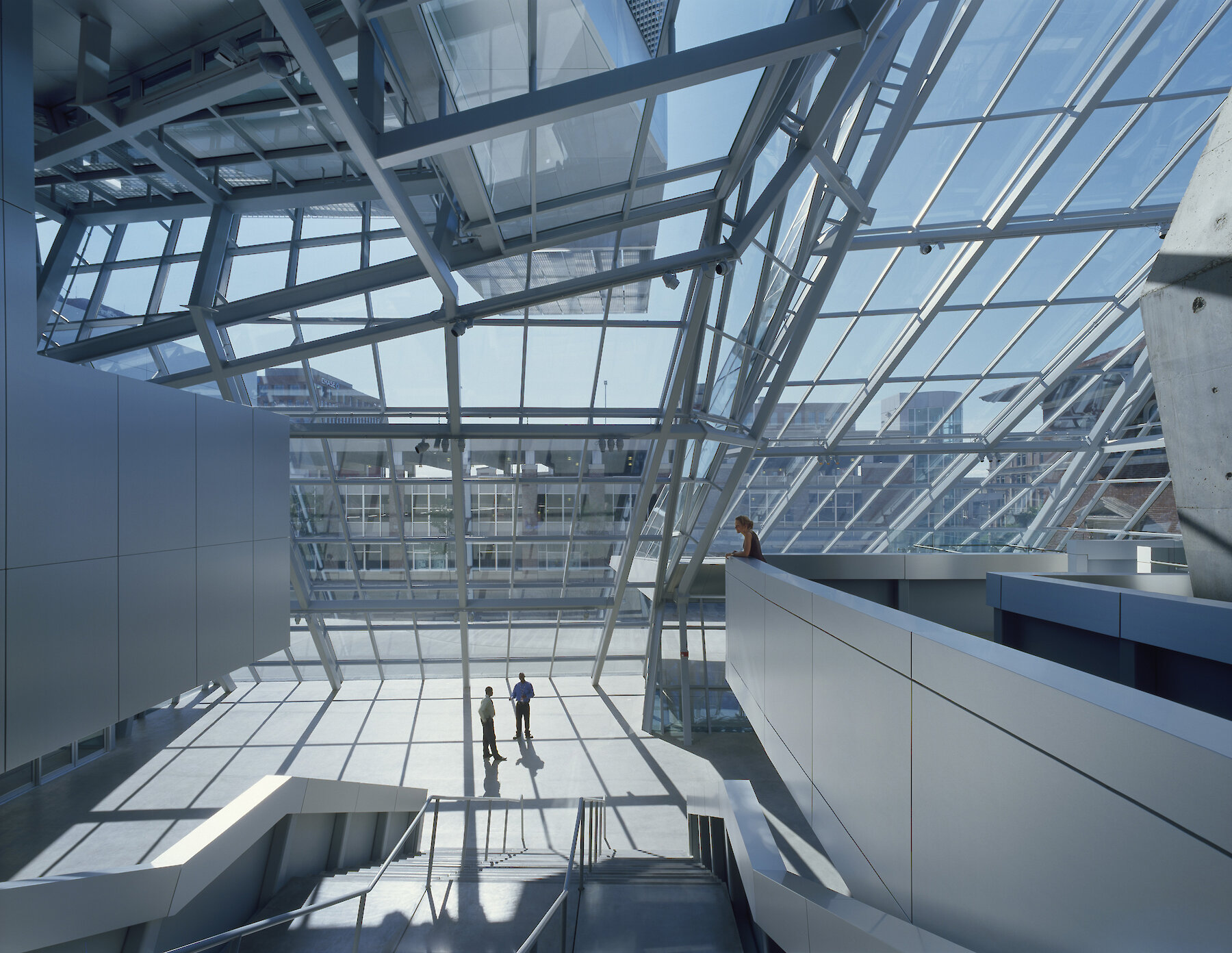

Roland Halbe
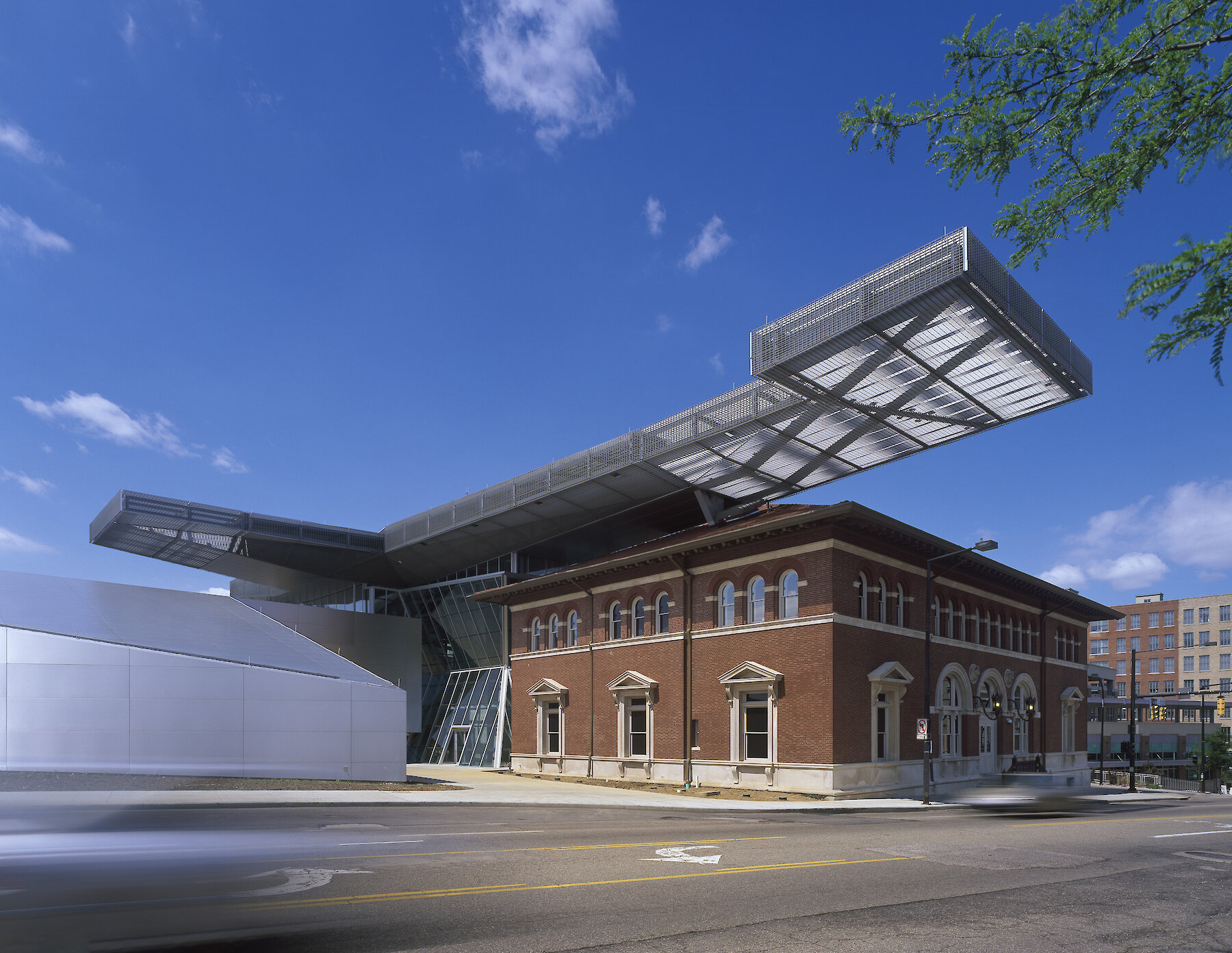
Roland Halbe

Roland Halbe
On the map
Related projects
Groninger Museum — The East Pavilion
Groningen, The Netherlands
1993–1994


Central Los Angeles Area High School #9 for the Visual and Performing Arts
Los Angeles, USA
2002–2008
